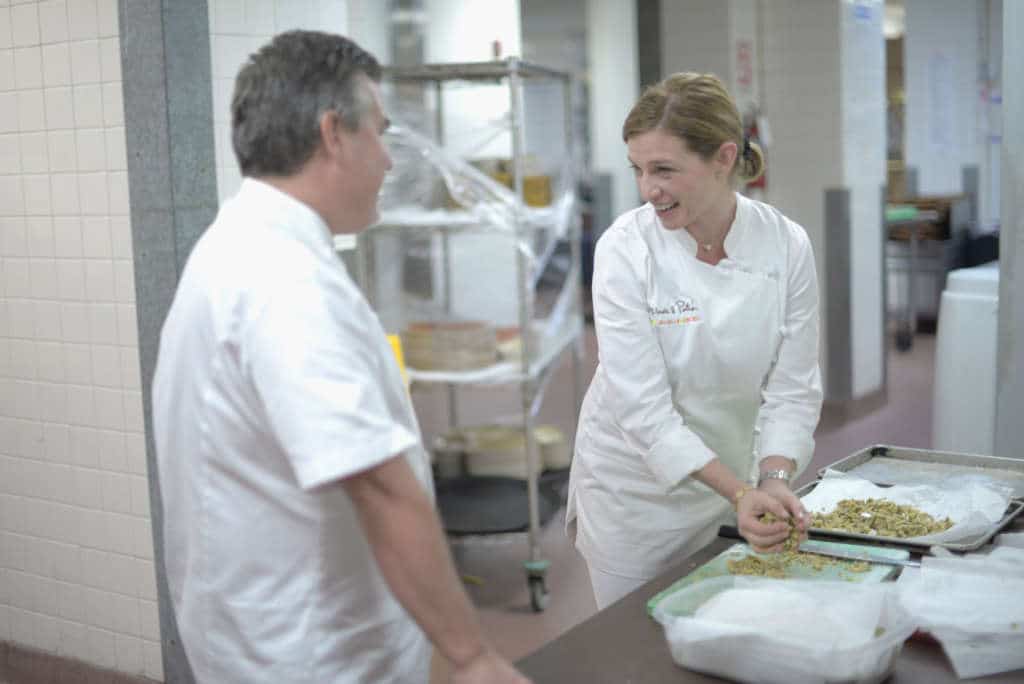WASHINGTON — If there are three foods worth stocking up on at the grocery store this weekend, Pati Jinich makes the case for tomatoes, onions and jalapeños. A few variations of these ingredients — plus a pot of black beans and a rotisserie chicken — make weeknight dinners a breeze.
On her Emmy-nominated PBS show “Pati’s Mexican Table,” Jinich, a chef and cookbook author, guides viewers through Mexico’s rich history and culture by way of its food. Back home in her Chevy Chase, Maryland, kitchen, she recreates her travel memories in the form of simple, family-friendly meals.
“I’m not going to have you grinding corn or doing things that not even Mexicans do in their homes, but you may find in some tiny little town out in the country in Mexico,” Jinich said.
“If I could say one thing about Mexican cuisine, it’s just how accessible and happy it is.”
So accessible, in fact, that three healthy, inexpensive and easy-to-find ingredients will help feed your crew for a week. A simple rough chop of the tomatoes, jalapeños and onion, followed by a drizzle of olive oil, a squeeze of lime and a pinch of salt, make a pico de gallo that’s perfect for topping grilled meats. (Not only does the salsa supply color and flavor, but the vegetable salad transforms a simple protein into a complete meal.)
Hungry kids crowding the kitchen before dinner? Serve the pico de gallo alongside toasted tortilla chips, jicama sticks and carrots for dipping.
“Now you take those same ingredients — you take the tomato, the jalapeño, or any chili that you like, and the onion — and you roast them, and you char them until they’re completely charred on the outside and you transform their taste from fresh, to rustic and deep, and even some sweetness comes out of it,” Jinich said.
“You puree that and you open a can of black beans and you have the most delicious tomato and black bean soup, or a rustic sauce for enchiladas.”
Boiling the same three ingredients for 10 minutes creates an entirely different flavor profile. Once pureed, it makes a sauce perfect for spooning over eggs for huevos rancheros. Jinich said it can even be used as a base for making Alphabet soup or a Mexican-style pasta.
Having cooked beans at the ready is another shortcut for weeknight meals. Jinich simply rinses black beans, throws them in a pot with an onion, covers them and cooks them until they’re soft.
Combined with the roasted salsa (above), you have a healthy and hearty soup. Pureed black beans make for a tasty enchilada sauce or, once refried, provide a filling for one of Jinich’s favorite meals — molletes.
“It’s like the Mexican grilled-cheese hero,” explained Jinich, a former political analyst who is now the resident chef at the Mexican Cultural Institute.
“So you take crusty bread, you spread some of those refried beans, add some cheese, toast it in the oven, and then you add some of that pico de gallo salsa on top and you have a full meal.”

Jinich, a mom of three boys, said a double — sometimes triple — batch of chicken tinga is a staple in her fridge. To make it, she shreds chicken (a store-bought rotisserie chicken works perfectly) and cooks it down in a sauce made from tomatoes, onion and chipotle in adobo.
“What can you do with chicken tinga? You can eat it on top of rice, you can eat it with a side of beans, you can top some cooked pasta with it, make chicken quesadillas … a couple days later, that’s a panini,” said Jinich, who added that the flavor only improves after a few days.
And while consuming fried, cheese-covered platters at your favorite Mexican restaurant multiple times a week might not the best for your waistline, Jinich said real Mexican home cooking is healthy, so there’s no need to shy away from eating it on a regular basis.
“We have just tons of veggies and grains and a lot of raw fruits and nuts,” Jinich said about Mexican cuisine.
“We’ve given so much to the world in terms of nutrition and health, if you think about avocado, cacao, tomato, all these chilies … turns out they’re metabolism boosters, and they’re packed with vitamin C.”
And never before has it been easier to make at home.
“I moved to the U.S. 20 years ago, and you could find five, 10 ingredients. Now I will tell you that out of the treasure trove of Mexican ingredients, you cannot find maybe five,” Jinich added.
Interested in hearing more from Jinich? She will be the keynote speaker at the March 10 Celebrating Food: Women in Gastronomy Symposium at the Universities at Shady Grove. Tickets are available online. You can also find hundreds of recipes on her website.







